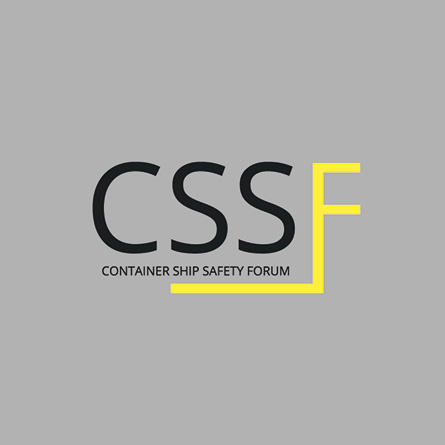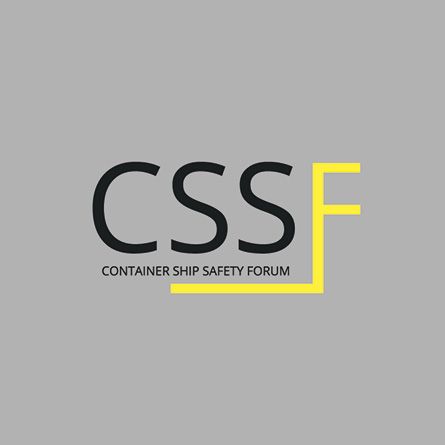History of Container Shipping
Interested to learn more about the container transportation industry? Read our exclusive summary of this modern transport revolution here.
The inventor
The idea of shipping products in containers is a very old one. The ancient Greeks used sealed vases – or amphorae – to transport oil or wine. Later cultures used large trunks to ship valuables aboard their sailing vessels. But containerisation is a modern phenomenon just over 50 years old.
Today containers being trailed along roads or transported on long railroad trains are everyday sights around the world. Shipping a variety of goods in standard containers such as these was an American invention. Others may have had similar ideas, but it was an entrepreneur named Malcom McLean who first put it into practice about half a century ago.
McLean, boss of his own trucking business in North Carolina, was frustrated by the laborious methods of handling goods in the early part of the 20th century. He saw that if it was possible to overcome congestion on the highways and the inefficient loading and discharge procedures of conventional cargo ships there would be massive benefits. Specifically, he envisaged the savings in time, labour and costs if the cargo containment part of a trailer could simply be lifted on and off the chassis and transported directly by ship. The idea sounds simple: but in fact it required considerable alterations to the ship and truck bodies of the day.
On 26 April 1956 McLean’s prototype - the refitted Second World War tanker, the Ideal-X - sailed from Newark to Houston carrying 58 truck bodies with the wheels removed. This shipment of the first modern containers heralded a revolution in transportation that has changed the world. In the 1950s it could still take up to five days for gangs of stevedores to unload a standard conventional cargo vessel and another five days for loading. ‘Breakbulk’ cargo ships were spending as much time in port as they did at sea.
The Ideal-X proved that the use of containers could dramatically reduce turnaround times in port. Furthermore, it slashed costs – from nearly $6 per ton on a breakbulk cargo ship to less than 16 cents to load a ton onto the first container ship. Other benefits rapidly emerged, including a sharp reduction in theft from cargoes on the quayside, leading to big reductions in insurance rates paid by shippers.
The next steps
McLean saw that using tankers would not fully realise the potential of this new mode of transport. By 1957, he had already introduced the first of a series of vessels converted into specialised container ships that were able to carry boxes below decks as well as on deck. They were more efficient container carriers. Soon enough, his company was re-branded Sea-Land Service, a name that summed up the ‘multi-modal’ union of overland and seaborne transportation. Able to call on plentiful surplus shipping left over from the war, the company operated a fast-expanding service mainly along the US east coast.
McLean also understood that beyond the ships, the logic of containerisation was that every part of the system would have to be developed specially in order to derive maximum efficiencies from the use of the container. Most importantly, this included the need to develop specialised container ports. Differing from the traditional big city ports, these required new dockside cranes rather than large teams of labourers. Containers were to be stacked in the open rather than stored in warehouses. Container ports also needed direct access to motorways and railway lines.
Traditional city centre ports such as New York or London could not compete, lacking room to store thousands of containers and unable to accept the hundreds of trucks needed for on-transport of containers from the ship. As dedicated new ports sprang up on hinterland sites, containerisation acted as a catalyst in the steady de-industrialisation and cleaning up of many of the world’s leading cities.
In the mid-1960s McLean’s Sea-Land further underlined the value of the container in improving the logistics of the American military’s adventure in Vietnam. The company soon had six container vessels crossing the Pacific from the US west coast. Sea-Land’s regular peacetime services went international in 1966 when the vessel Fairland departed New Jersey for a first cross-Atlantic voyage to Rotterdam with 236 containers on board. The Fairland and the other ships in the ground-breaking Atlantic service had bridge cranes for loading and unloading the containers and it would be some time before quayside cranes were built specifically for the new trade.
At the same time containers had been embraced by other companies and other continents. As early as 1958 another American carrier inaugurated containerisation in the Pacific with a sailing from San Francisco with 20 containers on deck. At the beginning of the 1960s Matson introduced its first full container vessel while American President Lines and others commissioned new container/breakbulk vessels.
The decade of the 1960s saw leading European shipping companies such as Germany’s Hapag Lloyd, Britain’s P&O an Denmark’s Maersk Line adapt to the container and introduce their first pure container-carrying vessels, while Japanese carriers led Asia’s conversion to box shipping.
By the end of the decade, McLean had sold Sea-Land and its impressive fleet of more than 40 container vessels. He returned to shipping in the late 1970s after a period of involvement in various other businesses. This time he purchased United States Lines, an esteemed but under-performing company, promising to revive it by building a team of jumbo container ships for a round-the-world service that could intersect with smaller, regional ‘feeder’ services. When they arrived in 1984, the visionary service was successfully launched and a new industry pattern established. But a worldwide industry recession brought US Lines to its knees.
When Malcolm Mclean died in 2001, aged 88, he was eulogised as the undisputed ‘father of containerisation’. He was named ‘Man of the Century’ by the International Maritime Hall of Fame and runner-up to Aristotle Onassis as ‘Man of the Century’ by Lloyd’s List, the London based newspaper often dubbed ‘The Bible of Shipping’.
More players, bigger ships
As an emerging specialist in container vessels in the 1980s, it is perhaps not too surprising that Costamare could claim a connection with Malcom McLean’s ships. After the collapse of US Lines, we purchased the two steam turbine powered vessels, Chevalier Roze and Chevalier Paul, each with capacity for 2,500 standard containers. In 1987, these were easily the largest vessels in Costamare’s fleet up to that point.
The development of Costamare was representative of two very important trends that altered the face of container shipping in the 1980s and 1990s. Our company was among the first of a new breed of container ship companies that specialised in ownership or management of the vessels and aimed to serve the major multi-modal container carriers rather than compete with them. This sector, which provides ships of every size for long term charter to the liner services, has become vital to the overall growth of the system.
The specialist providers of ships on charter have enabled the major carriers to expand their service networks much faster than they otherwise could have done, given the high capital requirements of developing the container ship fleet. Meanwhile the lines have been able to concentrate more on freight logistics and customer service.
The other major trend has been the growth in size of the container vessel.
Only 15 years earlier, Sea-Land had taken delivery of its innovative SL-7s, the largest as well as fastest containerships in the world up to that point with their capability of loading more than 1,000 standard boxes. The trend of developing ever larger vessels was now well-established, although few predicted how far it could practicably be taken. For many years, the dimensions of the Panama Canal were accepted as a practical limit on the size of vessels being built but in the late 1980s, American President Lines (now APL) began to build its C-10 and C-11 class ships, introducing vessels wider than the locks of the canal. These could carry more than 4,000 teus and changing global trade patterns encouraged further upscaling.
In the 1990s, the size of so-called ‘post-panamax’ vessels was pushed further, reaching about 7,000 teus capacity, and in the 21st century design of the largest ships has continued thinking ever bigger. Due to the integration of container logistics, this has in turn pushed the limits of port facilities, too. It was not long before ships capable of carrying more than 10,000 teus were under construction. The current record is held by Maersk Line’s SX Class vessels, introduced in 2006, which have capacity for up to about 15,000 teus.
Many experts suggest that the design of container vessels is now approaching the limits of technical viability – although predictions that the scale of ships had reached a plateau have been common during the sector’s rapid ascent.
Today container ships can carry virtually any type of cargo, including breakbulk cargo, and a variety of boxes caters for different kinds of commodities and goods. But standardisation has been key to the great success through efficiency of containerisation. Initially different carriers had their own specifications, meaning that often they could not carry each others’ containers. But interchangeability – not only between different companies’ fleets but also unifying the specifications of ships, trains and road transport was to everyone’s advantage.
In the 1960s the US Maritime Administration and then the International Standards Organisation adopted a number of standard lengths, with 20 ft and 40 ft being the most common internationally used measurements. Even now, the argument on optimum size has not been entirely laid to rest. Some speculate that the 20 ft and 40 ft boxes that are such a common site worldwide could soon be threatened by the 53 ft container prevalent in the US domestic transport system, although the issue is a controversial one.
Transport concept that changed the world
Container ships, and their seamless integration with onshore transport systems, have been the key element in globalisation, it has been persuasively argued. Before the container came into international use, the costs of ocean freight and port handling – not to mention the time and uncertainties involved – were such that international trade in goods made no economic sense.
In modern times, the construction of specialized container vessels and the economies of scale introduced by ever larger ships have offered massive reductions in the cost of transporting goods. The cost of moving goods has become almost negligible as a portion of the production cost. With such an efficient system of transport, in many cases products can be sourced from virtually anywhere without adding to expense.
One obvious result of the container shipping revolution has been to strongly facilitate China’s rise as the world’s factory. But the ripples of containerisation have spread far wider. For example, through reduction of idle warehouse time and faster delivery to customers it has promoted smarter and more precise business practices among manufacturers and retailers. New businesses have sprung up all over the globe, encouraged by the ability of their products to be successful in markets thousands of miles away.
Modern container vessels are at the centre of a very sophisticated industry. While the vessels themselves are highly automated, computers ashore determine loading and unloading sequences of boxes long in advance. The precise position in which the container is to be stacked ashore and the arrangements for land transport to deliver it to the door of the receiver are likewise pre-programmed. This highly efficient system has brought a new degree of reliability to global supply chains, allowing local manufacturers and high street shops to place orders from the other side of the globe with confidence that their goods will arrive safely and on time.







